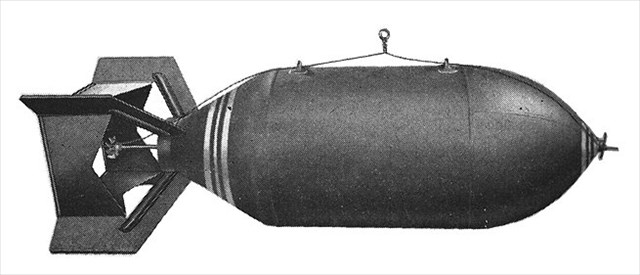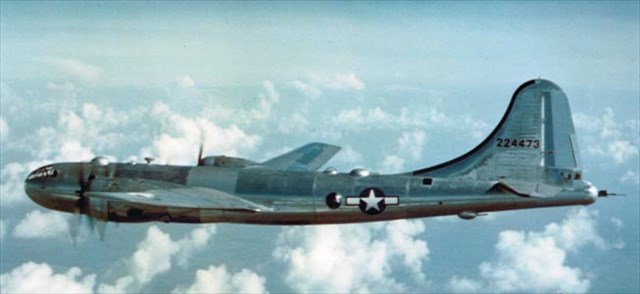Military history Mystery Cache
-
Difficulty:
-

-
Terrain:
-

Size:  (micro)
(micro)
Please note Use of geocaching.com services is subject to the terms and conditions
in our disclaimer.
NOTE! New location on 8 July 2020. Updated coordinates from checker.
Strategic bombing during World War II was the sustained aerial attack on railways, harbours, cities, workers' housing, and industrial districts in enemy territory. Strategic bombing is a military strategy which is distinct from both close air support of ground forces and tactical air power.
During World War II, it was believed by many military strategists of air power that major victories could be won by attacking industrial and political infrastructure, rather than purely military targets. Strategic bombing often involved bombing areas inhabited by civilians and sometimes bombing campaigns were deliberately designed to target civilian populations in order to terrorize, disorganize, and disrupt their usual activities. International law at the outset of World War II did not specifically forbid aerial bombardment of cities despite the prior occurrence of such bombing during World War I, the Spanish Civil War, and the Second Sino-Japanese War.

The year 1940 marked a change in attitude in the United States. The German victories in France, Poland and elsewhere, combined with the Battle of Britain, led many Americans to believe that the United States would be forced to fight soon. Following the attack on Pearl Harbor, President Roosevelt officially pronounced 7 December 1941, as "a date which will live in infamy" and asked for a declaration of war on Japan before a joint session of Congress on 8 December 1941. The motion passed with only one vote against it, in both chambers. Just three days later, on 11 December 1941 Adolf Hitler declared war on the United States, and had already remarked on the evening of the date of the Japanese attack that "We can't lose the war at all. We now have an ally which has never been conquered in 3,000 years".
The flammability of Japan's large cities, and the concentration of munitions production there, made strategic bombing the favorite strategy of the Americans from 1941 onward. The first efforts were made from bases in China, where massive efforts to establish B-29 bases there and supply them over the Hump (the Himalayas) failed in 1944; the Japanese Army simply moved overland and captured the bases. Saipan and Tinian, captured by the U.S. in June 1944, gave secure bases for the very-long-range B-29. The Boeing B-29 Superfortress boasted four 2,200 horsepower Wright R-3350 supercharged engines that could lift four tons of bombs 33,000 feet (high above Japanese flak or fighters), and make 3,500 mile round trips. However, the systematic raids that began in June 1944, were unsatisfactory, because the AAF had learned too much in Europe; it overemphasized self-defense. AAF commander General Hap Arnold, in personal charge of the campaign (bypassing the theater commanders) brought in a new leader, brilliant, indefatigable, hard-charging General Curtis LeMay. In early 1945, LeMay ordered a radical change in tactics: remove the machine guns and gunners, fly in low at night. (Much fuel was used to get to 30,000 feet; it could now be replaced with more bombs.) The Japanese radar, fighter, and anti-aircraft systems were so ineffective that they could not hit the bombers. Fires raged through the cities, and millions of civilians fled to the mountains.

Tokyo was hit repeatedly and first suffered a serious blow on March 1945, a conflagration that destroyed nearly 270,000 buildings over a 16 square mile (41 km²) area, killing at least 83,000, and estimated by some to be the single most destructive bombing raid in military history. On June 5, 51,000 buildings in four miles of Kobe were burned out by 473 B-29s. Osaka, where one-sixth of the Empire's munitions were made, was hit by 1,733 tons of incendiaries dropped by 247 B-29s. A firestorm burned out 8.1 square miles, including 135,000 houses; 4,000 died
Later in 1945 the war finally ended. Now to the actual task. As I'm a nice guy I will tell you exactly what you need to do. You may or may not know what kind of bomb the US military devised during the World War II specifically against Japan. Wikipedia tells you two definite locations where they were used. Your task is to find the coordinates of the first location where the bomb caused reported devastation and enter those coordinates into the checker.
There is a sufficient range of tolerance (999 meters) in the checker. The checker will reveal the location of the cache. BYOP!

Additional Hints
(Decrypt)
[puzzle] 5K... / k enl
[cache] obk